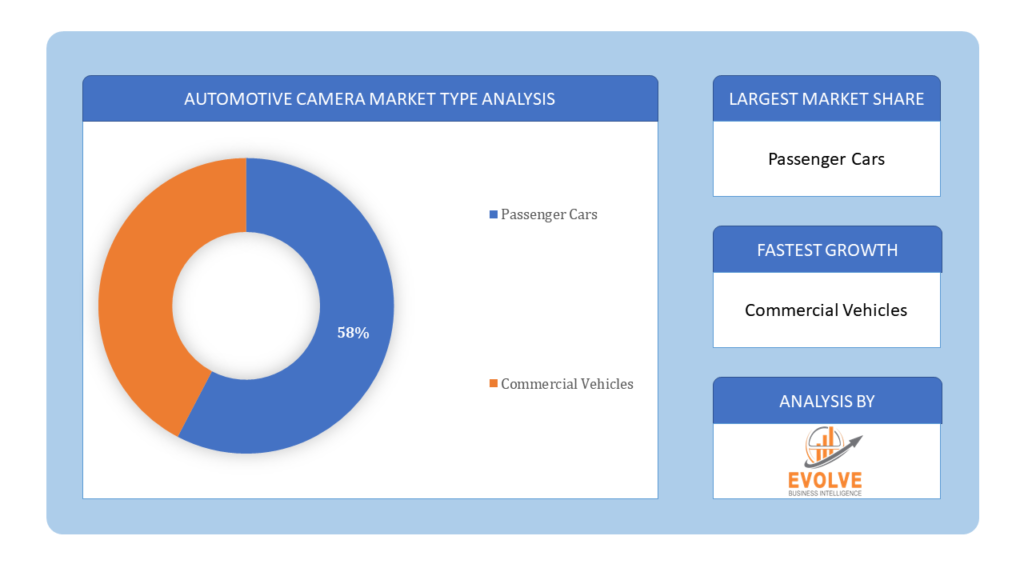Automotive Camera Market Analysis and Global Forecast 2023-2033
$1,390.00 – $5,520.00Price range: $1,390.00 through $5,520.00
Automotive Camera Market Research Report: Automotive Camera Market By Technology (Thermal Camera, Digital Camera, and Infrared Camera) By Type (Single View System and Multi-Camera System) By Vehicle Type (Passenger Cars and Commercial Vehicles) By Application (Park Assist System and Advanced Driver Assistance Systems (ADAS), Driver Monitoring System, and Other Applications), and by Region — Forecast till 2033
Page: 141
[vc_row content_placement=”top”][vc_column width=”2/3″ css=”.vc_custom_1532433256788{margin-right: 15px !important;}” offset=”vc_col-md-8″][woodmart_responsive_text_block size=”custom” align=”left” woodmart_css_id=”663b9c304c4ea” content_width=”100″ inline=”no” text_font_size=”eyJwYXJhbV90eXBlIjoid29vZG1hcnRfcmVzcG9uc2l2ZV9zaXplIiwiY3NzX2FyZ3MiOnsiZm9udC1zaXplIjpbIiAud29vZG1hcnQtdGV4dC1ibG9jayJdfSwic2VsZWN0b3JfaWQiOiI2NjNiOWMzMDRjNGVhIiwiZGF0YSI6eyJkZXNrdG9wIjoiMTRweCJ9fQ==” responsive_spacing=”eyJwYXJhbV90eXBlIjoid29vZG1hcnRfcmVzcG9uc2l2ZV9zcGFjaW5nIiwic2VsZWN0b3JfaWQiOiI2NjNiOWMzMDRjNGVhIiwic2hvcnRjb2RlIjoid29vZG1hcnRfcmVzcG9uc2l2ZV90ZXh0X2Jsb2NrIiwiZGF0YSI6eyJ0YWJsZXQiOnt9LCJtb2JpbGUiOnt9fX0=”]
Automotive Camera Market Overview
Automotive Camera Market Size is expected to reach USD 25.37 Billion by 2033. The Automotive Camera industry size accounted for USD 12.35 Billion in 2023 and is expected to expand at a compound annual growth rate (CAGR) of 11.54% from 2023 to 2033. The automotive camera market refers to the industry involved in manufacturing, distributing, and integrating camera systems within vehicles for various purposes such as driver assistance, parking assistance, and advanced safety features. These cameras capture real-time images or videos, enhancing the driver’s visibility and overall driving experience while improving safety. With the rise of autonomous driving technologies and stringent safety regulations, the demand for automotive cameras is steadily increasing. Key players in the market are continuously innovating to develop advanced camera solutions with higher resolution, wider viewing angles, and enhanced functionalities to meet the evolving needs of the automotive industry.
Global Automotive Camera Market Synopsis
The Automotive Camera market experienced a detrimental effect due to the Covid-19 pandemic. The COVID-19 pandemic had a significant impact on the automotive camera market, causing disruptions in production, supply chains, and demand. As vehicle manufacturing slowed down and consumer spending decreased, the adoption of automotive cameras faced delays. However, the pandemic also accelerated the need for contactless technologies and advanced driver assistance systems, leading to a rebound in demand for automotive cameras as the industry adapted to new safety and operational standards.
Global Automotive Camera Market Dynamics
The major factors that have impacted the growth of Automotive Camera are as follows:
Drivers:
⮚ Advancements in Camera Technology
Technological advancements, such as improved image sensors, higher resolution, and enhanced image processing algorithms, are making automotive cameras more capable and reliable. This, in turn, is driving their adoption in a broader range of applications within vehicles.
Restraint:
- Data Privacy and Security Concerns
Automotive cameras generate vast amounts of data about vehicle surroundings and occupants. Ensuring the privacy and security of this data presents challenges for automakers, particularly as vehicles become more connected. Concerns about data privacy and potential misuse could impact consumer trust and adoption of camera-enabled features.
Opportunity:
⮚ Advancements in Autonomous Driving
The continued development of autonomous driving technology represents a significant opportunity for automotive cameras. Cameras are essential for providing real-time perception and situational awareness, enabling higher levels of autonomy. As autonomous driving technology matures, the demand for advanced camera systems with improved capabilities is expected to increase.
Automotive Camera Market Segment Overview
By Technology
Based on the Technology, the market is segmented based on hermal Camera, Digital Camera, and Infrared Camera. However, in terms of technology, thermal, digital, and infrared cameras stand out prominently. These camera technologies play pivotal roles in enhancing vehicle safety, navigation, and overall driving experience, fueling their widespread adoption in the automotive sector.
By Type
 Based on Type, the market has been divided into Single View System and Multi-Camera System. While both types serve critical roles in modern vehicle safety and functionality, multi-camera systems are gaining significant traction due to their ability to provide comprehensive views, enabling advanced driver assistance systems (ADAS) and enhancing overall situational awareness for drivers.
Based on Type, the market has been divided into Single View System and Multi-Camera System. While both types serve critical roles in modern vehicle safety and functionality, multi-camera systems are gaining significant traction due to their ability to provide comprehensive views, enabling advanced driver assistance systems (ADAS) and enhancing overall situational awareness for drivers.
By Vehicle Type
Based on the Vehicle Type, the market has been divided into Passenger Cars and Commercial Vehicles. While both categories leverage camera technology to enhance safety and performance, passenger cars lead the market due to higher consumer demand for advanced driver assistance features and in-car entertainment systems, driving the adoption of sophisticated camera systems in this segment.
By Application
Based on Application, the market has been divided into Park Assist System and Advanced Driver Assistance Systems (ADAS), Driver Monitoring System, and Other Applications. These applications are driving the demand for automotive cameras due to their crucial roles in enhancing vehicle safety, enabling features like lane departure warning, adaptive cruise control, and automatic emergency braking. As vehicles become more autonomous, the importance of such systems is expected to further amplify, consolidating their dominance in the market.
Global Automotive Camera Market Regional Analysis
Based on region, the market has been divided into North America, Europe, Asia-Pacific, the Middle East & Africa, and Latin America. The area of Europe is anticipated to dominate the market for the usage of Automotive Camera, followed by those in Asia-Pacific and North America.
Automotive Camera Europe Market
The Europe region holds a dominant position in the Automotive Camera market. Over the course of the projected period, Europe is expected to dominate the automotive camera market share. Government regulations enforcing strict safety standards in this area are anticipated to propel market expansion. For instance, in an effort to reduce traffic accidents, Europe has implemented new safety laws for automakers, such as the General Safety Regulation (EC) 661/2009 and the Pedestrian Safety Regulation (EC) 78/2009.
Automotive Camera Asia Pacific Market
The Asia-Pacific region is witnessing rapid growth and emerging as a significant market for the Automotive Camera industry. As the market’s second-largest region, Asia Pacific is expected to grow strongly over the projection period. The second-largest position in this market is predicted to be maintained by the increasing imports of Asian-made components from North America and Europe. The expansion of the market in this area is anticipated to be driven by rising vehicle production and sales.
Competitive Landscape
The competitive landscape includes key players (tier 1, tier 2, and local) having a presence across the globe. Companies such as Automation Engineering Inc., Robert Bosch GmbH, Continental AG, Aptiv PLC, and Stonkam Co., Ltd. are some of the leading players in the global Automotive Camera Industry. These players have adopted partnership, acquisition, expansion, and new product development, among others as their key strategies.
Key Market Players:
- Automation Engineering Inc.
- Robert Bosch GmbH
- Continental AG
- Aptiv PLC
- Stonkam Co., Ltd.
- Mobileye N.V.
- Autoliv Inc.
- Magna International Inc.
- Germin Ltd
- Panasonic Corporation
Key Development:
In September 2023, Panasonic Corporation unveiled its latest breakthrough in automotive camera technology, introducing a cutting-edge camera system designed to enhance vehicle safety and autonomous driving capabilities. Leveraging advanced sensors and artificial intelligence, this development marks a significant stride forward in Panasonic’s commitment to shaping the future of automotive innovation, setting new standards for performance and reliability in the industry.
Scope of the Report
Global Automotive Camera Market, by Technology
- Thermal Camera
- Infrared Camera
- Other Applications
Global Automotive Camera Market, by Type
- Passenger Cars
- Commercial Vehicles
Global Automotive Camera Market, by Vehicle Type
- Single View System
- Multi Camera System
Global Automotive Camera Market, by Application
- Park Assist System
- Digital Camera
- Advanced Driver Assistance Systems (ADAS)
- Driver Monitoring System
Global Automotive Camera Market, by Region
- North America
- US
- Canada
- Mexico
- Europe
- UK
- Germany
- France
- Italy
- Spain
- Benelux
- Nordic
- Rest of Europe
- Asia Pacific
- China
- Japan
- South Korea
- Indonesia
- Austalia
- Malaysia
- India
- Rest of Asia Pacific
- South America
- Brazil
- Argentina
- Rest of South America
- Middle East & Africa
- Saudi Arabia
- UAE
- Egypt
- South Africa
- Rest of Middle East & Africa
| Parameters | Indicators |
|---|---|
| Market Size | 2033: $25.37 Billion |
| CAGR | 11.54% CAGR (2023-2033) |
| Base year | 2022 |
| Forecast Period | 2023-2033 |
| Historical Data | 2021 |
| Report Coverage | Revenue Forecast, Competitive Landscape, Growth Factors, and Trends |
| Key Segmentations | Technology, Type, Vehicle Type, Application |
| Geographies Covered | North America, Europe, Asia-Pacific, Latin America, Middle East, Africa |
| Key Vendors | Automation Engineering Inc., Robert Bosch GmbH, Continental AG, Aptiv PLC, Stonkam Co., Ltd., Mobileye N.V., Autoliv Inc., Magna International Inc., Germin Ltd, Panasonic Corporation |
| Key Market Opportunities | Sensing cameras Application of these cameras in the advanced driver assistance systems |
| Key Market Drivers | Increasing demand for luxury vehicles Demand for safety measures |
REPORT CONTENT BRIEF:
- High-level analysis of the current and future Automotive Camera Industry trends and opportunities
- Detailed analysis of current market drivers, restraining factors, and opportunities analysis in the future
- Historical market size for the year 2021, and forecast from 2023 to 2033
- Automotive Camera market share analysis for each segment
- Competitor analysis with a comprehensive insight into its product segment, financial strength, and strategies adopted.
- Identifies key strategies adopted by the key players including new product development, mergers and acquisitions, joint ventures, collaborations, and partnerships.
- To identify and understand the various factors involved in the global Automotive Camera market affected by the pandemic
- To provide year-on-year growth from 2022 to 2033
- To provide short-term, long-term, and overall CAGR comparison from 2022 to 2033.
- Provide Total Addressable Market (TAM) for the Global Automotive Camera Market.
[/woodmart_responsive_text_block][/vc_column][vc_column width=”1/3″][vc_column_text css=”” text_larger=”no” woodmart_inline=”no”][html_block id=”3961″][/vc_column_text][vc_wp_text]
Press Release
[rpwe limit=”10″ thumb=”true”][/vc_wp_text][/vc_column][/vc_row][vc_row][vc_column][vc_column_text woodmart_inline=”no” text_larger=”no”]
Frequently Asked Questions (FAQ)
[/vc_column_text][vc_column_text woodmart_inline=”no” text_larger=”no”][sp_easyaccordion id=”14298″][/vc_column_text][/vc_column][/vc_row]








